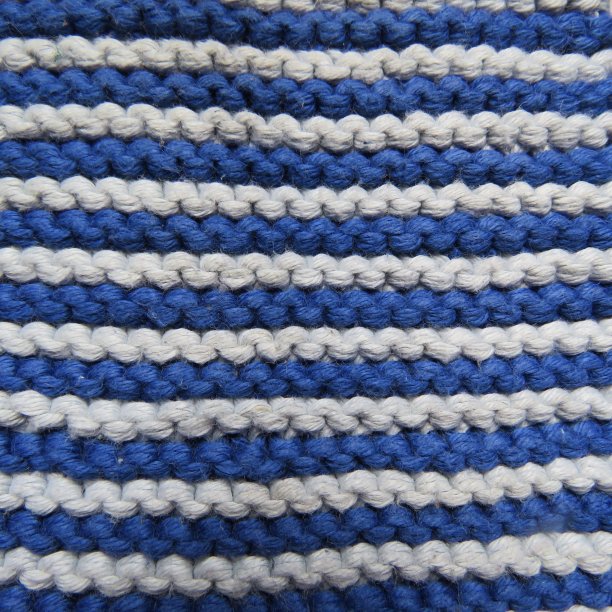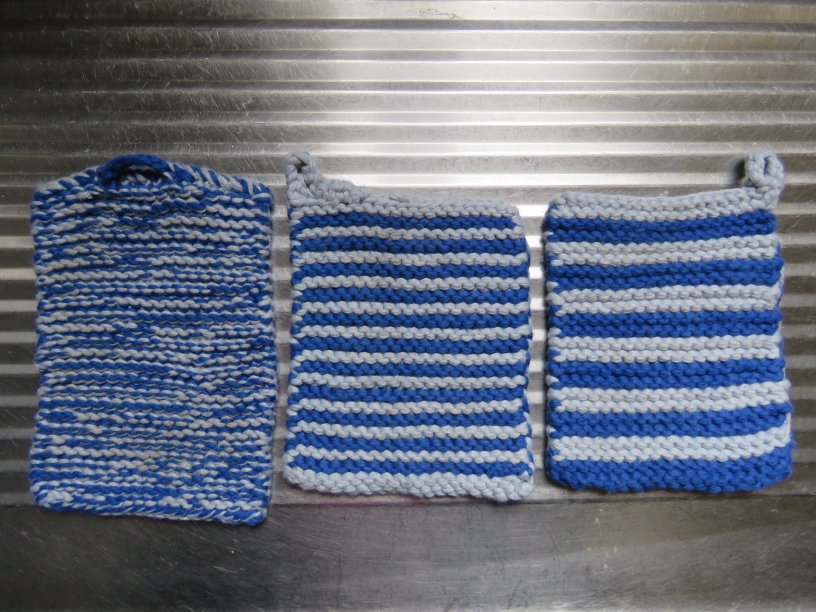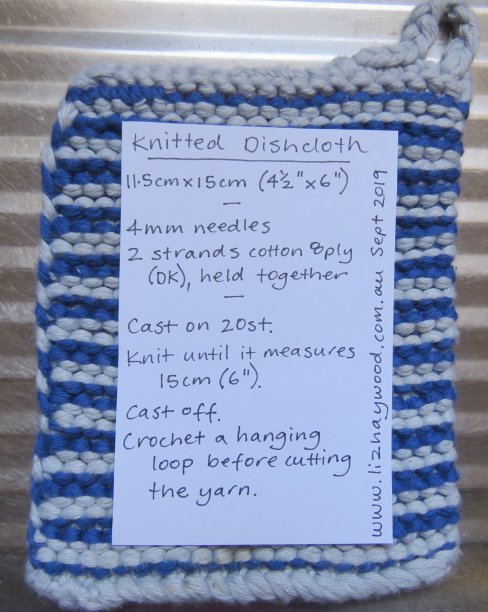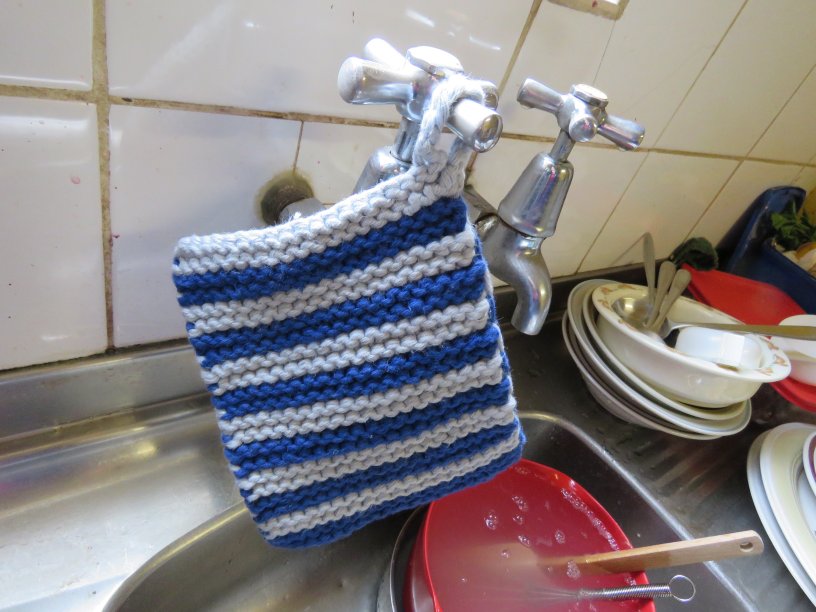Free pattern…and reflections on the perfect knitted dishcloth

Like many households, we are trying to “reduce, reuse and recycle”. At least I am, and I’m forcing everyone else come along for the ride.
We have been kitchen sponge users for a couple of decades now.
A while back I knitted some cotton dishcloths but they were rejected by a majority (ie everyone except me) in preference to the sponges from the shops.

The knitted dishcloths were considered too big and too thin (although Rhonda Hetzel maintains correctly that they dry out quicker between uses and therefore it’s harder for bacteria to multiply) because everyone was used to small thick sponges.
Endeavouring to Give The People What They Want, and perhaps ease the transition from shop sponges to knitted, I’m trialing some smaller, chunkier handknitted dishcloths.



So, we’ll give these a whirl and see how well they perform. I like them already.
Cheers!
Fantastic! I do these too, but I crochet out of cotton yarn and give them away as Christmas presents to like-minded friends, bundled in groups of three or four, tied with a ribbon. I know they are used because I see them used in friends’ kitchens. But you’re right, thicker is better than thinner — too easy to put a hole in a thinner one. They are a great way to keep your hands occupied while watching Netflix. I simply do a double-crochet so the work grows slowly but I don’t have to worry about where I am in a pattern.
Hmmm…might try a crocheted one. Good idea giving them as presents in bundles of 3 or 4.
I was a dedicated sponge user too, until I found the Double the Fun Ballband dish sponge on Ravelry. If you make it the suggested size, it’s like a full size sponge. I make them smaller (casting on only 15 stitches) because I always liked the small ones.
Also, there’s some scrubby, plastic, hairy-looking yarn from Red Heart, which is perfect for the bands, so they can do some decent scrubbing, too. I can whip one out in 2 hours, including tying the ends, stuffing them inside, & crocheting around the outside edge
The key to keeping them from getting musty is to get them really soapy, don’t rinse out the soap, but squeeze out the water before you hang them to dry. They’ll be good for at least a week
These are all GREAT ideas – thanks so much Laurinda!
(Other readers, the pattern is here and it’s free.)
I love this useful and hilarious post.My family, too, is inflexible like your dishcloth fabric. I occasionally knit dishcloths and other family members hide them in the bottom of the drawer. Oh well. Thanks for all your great information.
Thanks Deb, it’s reassuring to know that I’m not alone in this world when it comes to the anti-knitted dishcloth brigade. Three years on and still no progress on that front, but I use the cloths shown in this post for other cleaning jobs.